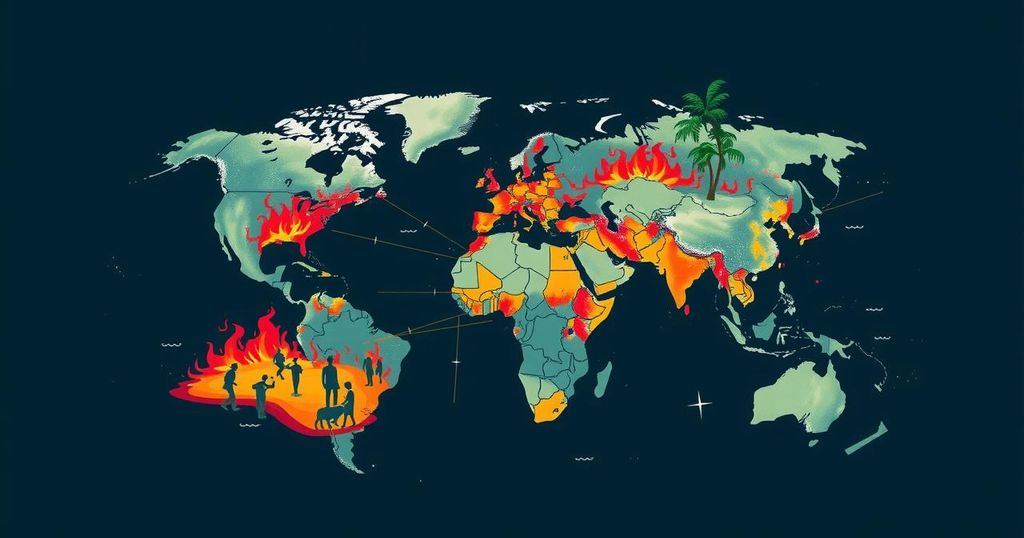The UNHCR’s report reveals that climate change is a significant driver of displacement, with three-quarters of refugees in areas prone to climate hazards. Filippo Grandi highlighted the plight of the vulnerable, compounded by existing conflicts. As climate hotspots emerge, tensions over resources heighten, particularly in regions like the Sahel, necessitating immediate action to address these interconnected crises.
A recent UNHCR report has unveiled a concerning intersection between climate change and global displacement, indicating that approximately three-quarters of forcibly displaced individuals reside in areas vulnerable to climate-related hazards. UN High Commissioner for Refugees, Filippo Grandi, emphasized that climate change considerably impacts the most vulnerable populations, aggravating their challenges amid existing conflicts and insecurity. The report, unveiled during the COP29 climate meeting in Azerbaijan, underscored the urgent need to address the climate crisis to mitigate its displacement effects. Climate change hotspots have emerged as critical battlegrounds for displaced communities. These regions face compounded risks from natural disasters, which threaten their security and can lead to secondary displacements. For instance, UNHCR is actively assisting Rohingya refugees in Bangladesh to navigate the challenges posed by monsoons and flooding. “In our region, where so many people have been displaced for so many years, we see the effects of climate change before our very eyes,” remarked Grace Dorong, a climate activist and former refugee from South Sudan. Furthermore, competition over dwindling natural resources can create tension between refugees and host communities, particularly regarding food, water, and land rights. The Sahel region of Western Africa exemplifies this complication, experiencing one of the fastest-growing displacement crises as climate change impacts agricultural viability. The region faces rising temperatures, which are 1.5 times greater than the global average, thereby exacerbating already precarious situations for millions who rely on agriculture for sustenance. In addressing these pressing issues, UNHCR identified 22 countries that are predicted to experience severe consequences from climate change, including the Eastern Horn of Africa, Afghanistan, Bangladesh, Ecuador, and Honduras. Collectively, these nations host a significant share of the world’s displaced populations, with 52% of internally displaced persons and notable proportions of stateless individuals and refugees residing within their borders. “I hope the voices of the people in this report help decision-makers to understand that if not addressed, forced displacement – and the multiplying effect of climate change – will get worse. But if they listen to us, we can be part of the solution, too,” concluded Dorong.
The interplay between climate change and displacement is an emerging global concern, as evidenced by recent reports highlighting that significant numbers of displaced individuals are found within regions suffering from climatic crises. The 2023 UNHCR report emphasizes the urgency of recognizing climate change as a primary driver of forced migration. With many displaced populations already enduring conflicts, the additional burden of climate hazards exacerbates their vulnerabilities and complicates the humanitarian response.
The UNHCR report serves as a clarion call to the international community to address the dual challenges of climate change and forced displacement. As climate-related crises intensify, the effects on vulnerable populations increase significantly. Leaders and policymakers must heed the voices of those affected and incorporate climate resilience into their response strategies to mitigate further displacement and ensure the safety and security of affected communities.
Original Source: www.outlookbusiness.com






